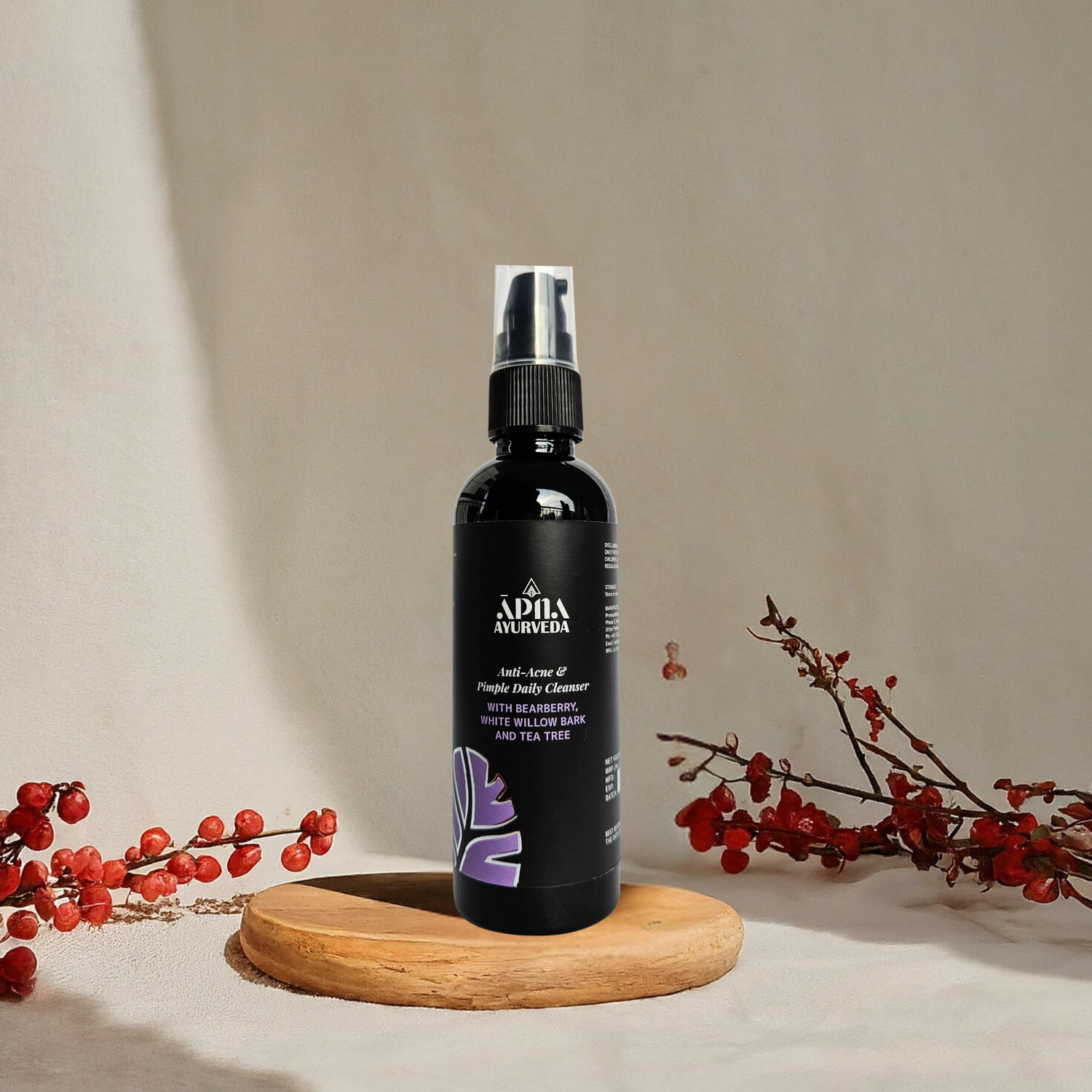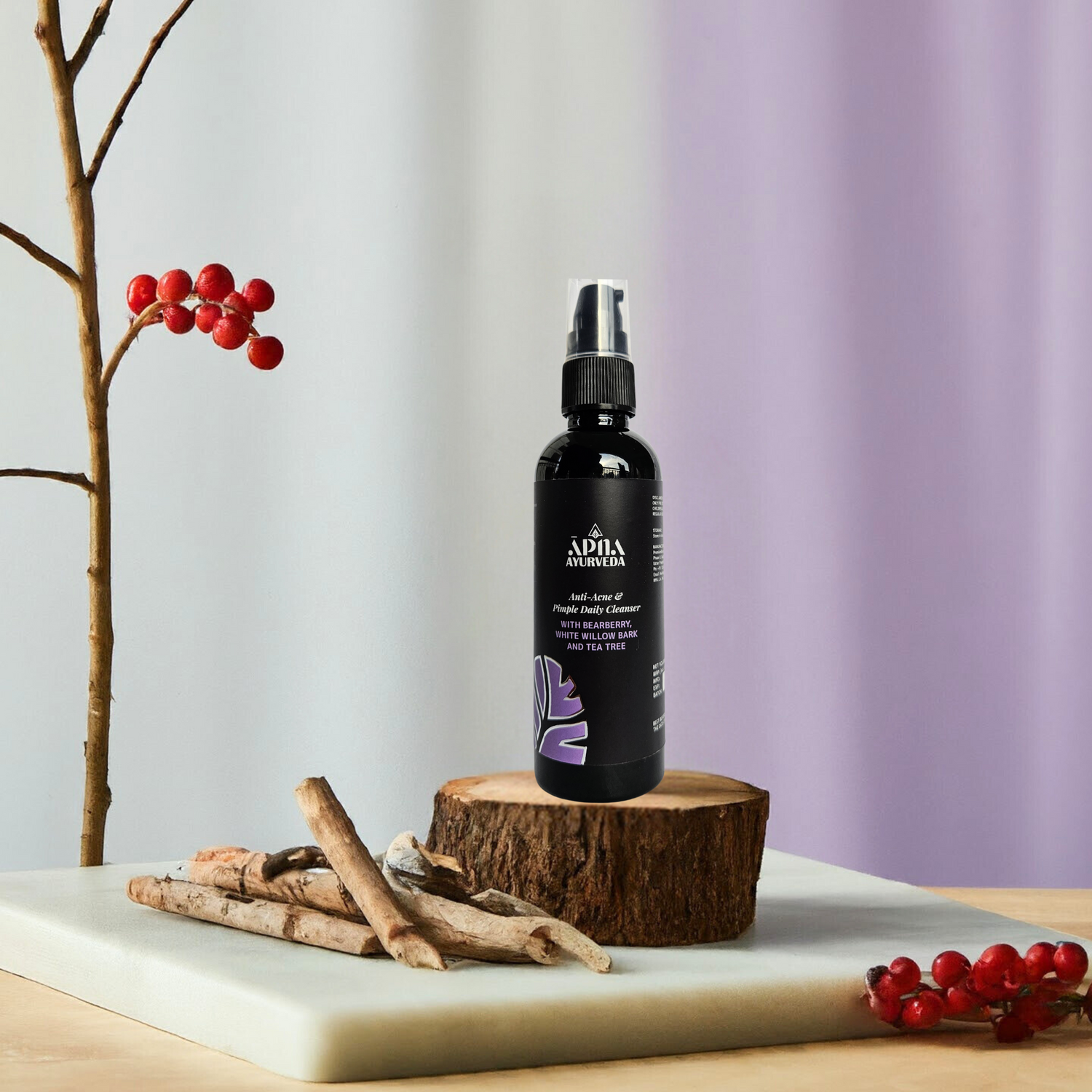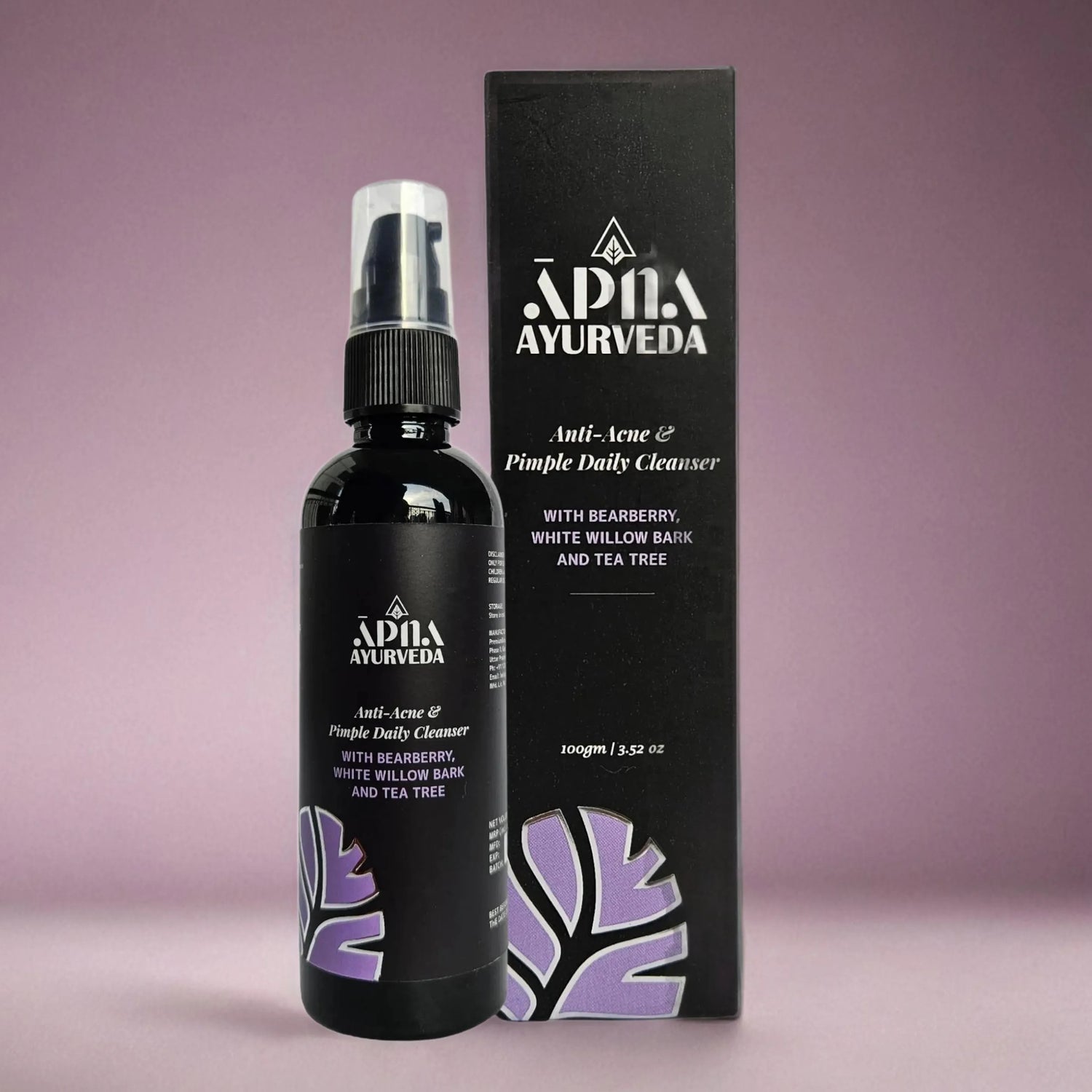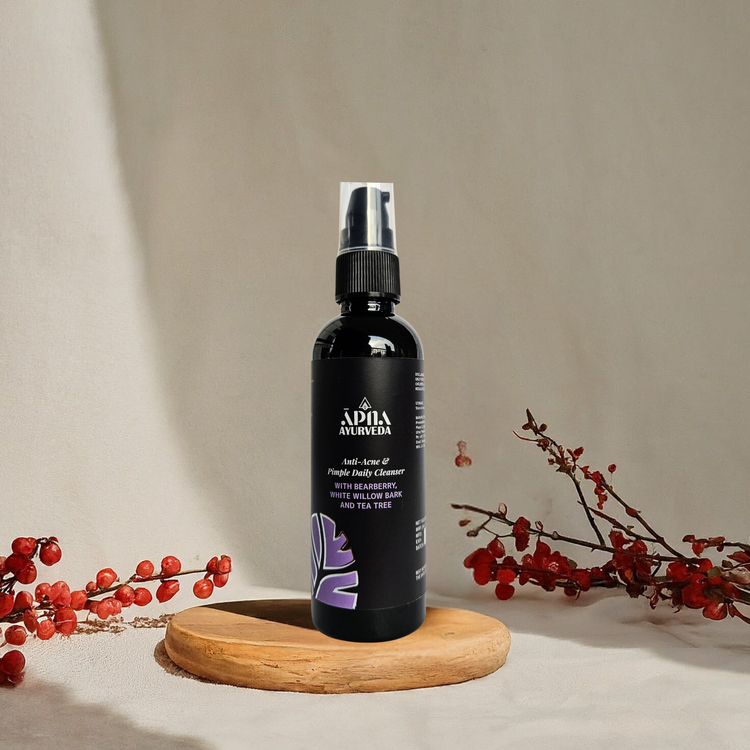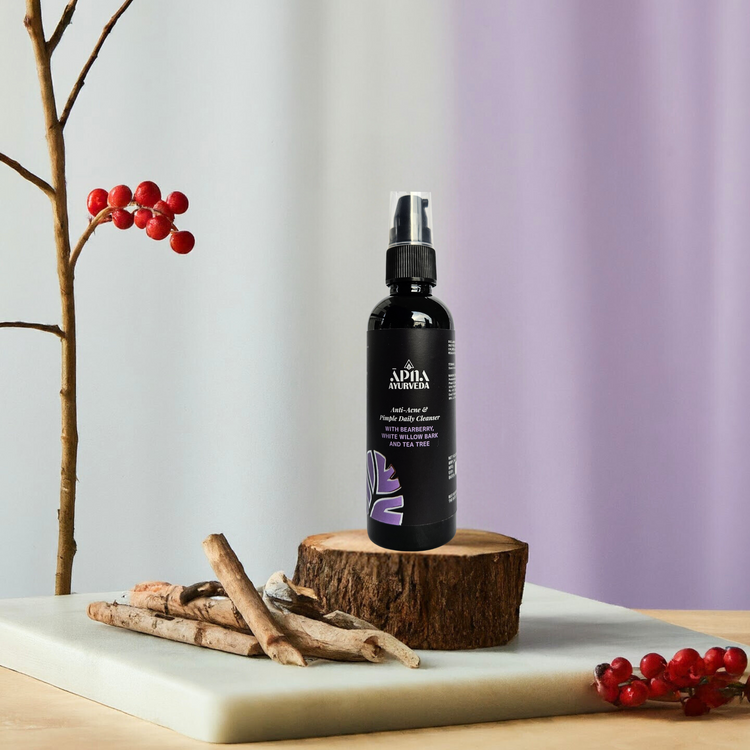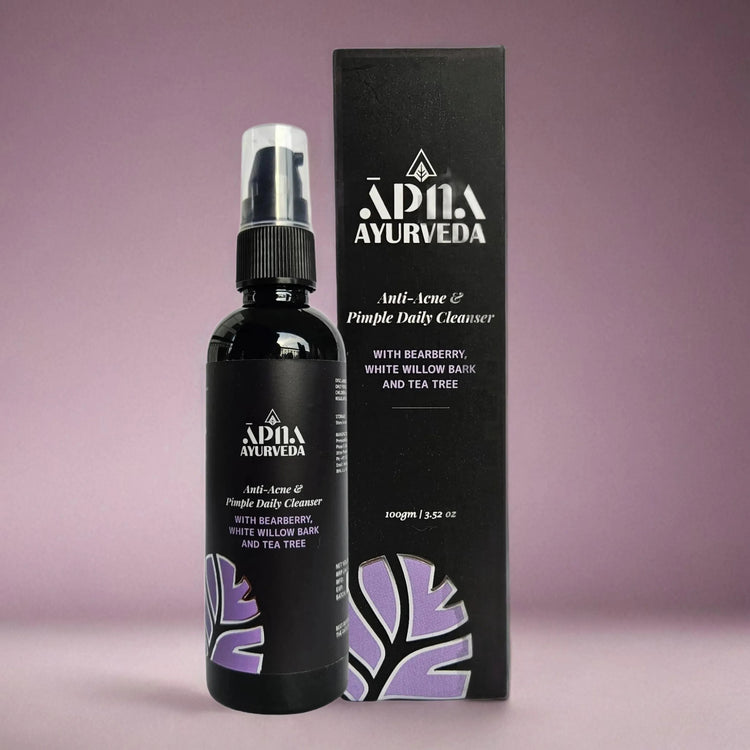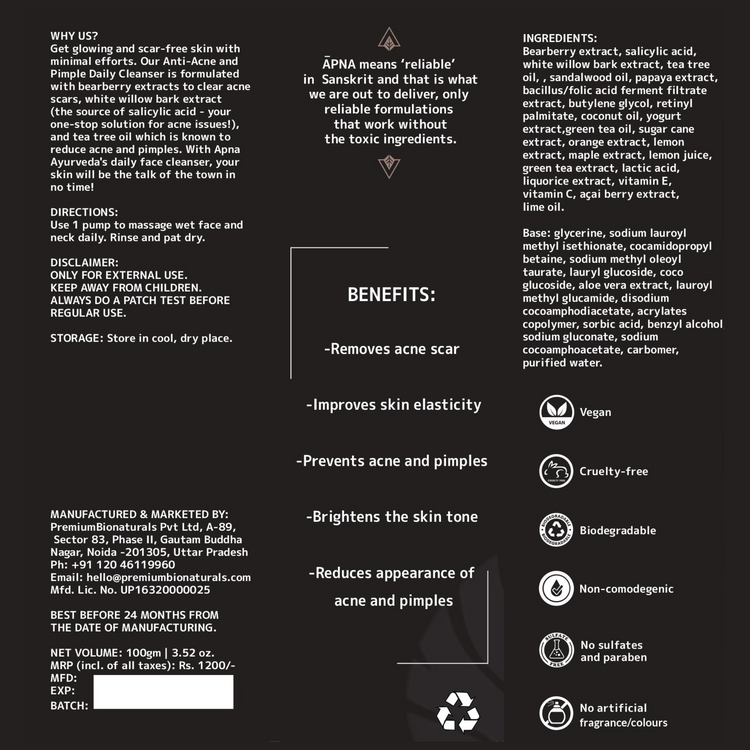AHAs and BHAs are types of hydroxy acids. The purpose of both is to exfoliate the skin. You've probably seen terms like AHA vs BHA floating around on your favourite skincare labels, but what do they actually mean, and which one should you use? Whether you're dealing with dry patches, clogged pores, or stubborn acne, understanding what are AHA's and BHA's can completely transform your skincare game.
We'll break down how AHA in skincare works differently from BHA, and answer the question on every skincare lover’s mind—can you use both?
Read on to learn more about these differences so you can determine whether your skin needs an AHA or BHA product.

What Are AHAs?

AHAs are a type of exfoliating acid known as alpha-hydroxy acids. They are naturally occurring in sugarcane (glycolic acid), milk (lactic acid), and fruit sources (citric acid). When these acids are used in cosmetic formulations today, they are usually produced in a laboratory.
AHAs have become increasingly popular over the last decade in skincare products aimed at minimising signs of skin ageing—such as fine lines and wrinkles, photoageing, and discolouration.
Types of AHAs
-
Lactic Acid
Lactic acid is a common AHA used in exfoliating skincare products that works by promoting the shedding of dead skin cells.
-
Glycolic Acid
Glycolic acid is another one of the most commonly used AHAs in skin care. This exfoliating acid features the smallest molecular weight of all the alpha-hydroxy acids, which allows it to easily and effectively penetrate the skin.
Perfect for: Normal to dry skin types looking for that dewy finish. Try an exfoliant with AHA 2-3 times a week to avoid over-exfoliation.
AHAs are ideal if your skin feels dull, textured or in need of a glow-up. They are especially helpful for addressing early signs of ageing and pigmentation.
What Are BHAs?

BHAs are another category of exfoliating acids known as beta-hydroxy acids. Beta-hydroxy acids have far-reaching exfoliation benefits for a number of skin conditions and concerns—including rough and bumpy skin, acne, psoriasis, seborrheic dermatitis, and more.
Similar to AHAs, BHAs are also naturally occurring in many plant-based sources, but are most often created in a lab when included in cosmetic products.
Types of BHAs
-
Salicylic Acid
Naturally found in the bark of certain plants—such as white willow and wintergreen leaves—salicylic acid is a beta-hydroxy acid that is commonly used for its mild yet effective exfoliating properties.
-
Citric acid
While primarily classified as an AHA, some formulations of citric acid are BHAs, too. Rather than even out your skin’s pH levels, this type of citric acid is primarily used to dry out excess sebum and clean out dead skin cells deep in your pores.
Perfect for: Those with oily, combination, or acne-prone skin that needs more than just surface-level exfoliation.
If your pores feel congested and your breakouts are relentless, BHA is your new best friend. It goes deeper where AHAs can’t reach.
The Difference Between AHAs vs BHAs
Although all hydroxy acids have some similarities, there are also a few key differences to keep in mind.
-
While both AHAs and BHAs act as skin exfoliants, AHAs are what is known as “water-soluble,” and BHAs are considered “oil soluble.” What this means is that AHAs work on the skin’s surface, while BHAs (like salicylic acid) work on the surface, as well as within the pores. This is why salicylic acid is considered useful for targeting clogged pores and uneven skin texture, while AHAs (like glycolic acid) tend to focus their primary benefits around fine lines, wrinkles, and sun damage.
-
Lastly, BHAs are generally seen as the milder of the two options, since they feature a larger molecular weight when compared to AHAs. This means that AHAs, such as glycolic acid, may therefore pose a higher risk of potential irritation for some skin types. Using AHAs and BHAs correctly (per the label’s instructions or as directed by a dermatologist) can help reduce the chances of any possible irritation.
Can You Use Both AHA and BHA?
The answer to this question will depend on your skin type, goals, and main concerns. Fortunately, with the right types of gentle, hydrating products, it’s possible to take advantage of the many benefits of AHAs and BHAs simultaneously.
If you’re feeling unsure, we recommend consulting with a dermatologist for an accurate skin assessment and the best possible advice before beginning a routine using chemical exfoliants.
#PRO TIP: If you’re primarily looking for dry skin relief or anti-ageing benefits, try an AHA. If you want to tackle acne, look to BHAs.
How to use AHAs
Products that contain AHAs report several benefitsTrusted Source, such as:
-
smoothing fine lines and surface wrinkles
-
improving skin texture and tone
-
unblocking and cleansing pores
-
improving skin appearance in general
AHAs work by exfoliating the skin. Exfoliation sheds surface skin cells. How much a product with AHAs exfoliates the skin depends on the concentration of the AHA ingredient, its acidity, and other ingredients found in it.
Side effects
Using AHAs comes with certain side effects. Most often, these side effects occur in skin peeling products. Side effects are local, meaning they affect the area of skin where the product was applied. They may include:
-
burning sensation on the skin
-
rash
-
swelling
-
changes in skin colour
-
blisters or welts
-
skin peeling
How to use BHAs
Products containing BHA, such as salicylic acid, are safe if their formulation was designed to avoid both skin irritation and increased sun sensitivity.
If the producer of the skin care product expects that the user may experience sun sensitivity after applying their product, there must be warnings clearly displayed on the product packaging.
Precautions
The Food and Drug Administration (FDA) recommends certain precautions when using products that contain BHA. These precautions include:
-
testing products that contain BHA on a small area of the skin before applying to a larger surface of the skin
-
following the instructions on the product label closely
-
avoiding exceeding the recommended applications
-
avoiding using BHA-containing skin products on infants and children
-
practicing sun protection when using BHA-containing products
Before using a product with BHA, people should speak with a doctor or dermatologist to find the safest and most effective product.
Frequently Asked Questions:
Q1) How do I know if I should use AHA or BHA?
A) If you're looking for an all-inclusive anti-ageing treatment, then an AHA may be the best fit. A BHA may better suited if you want to calm down inflammation and get rid of acne.
Q2) Is AHA or BHA better for uneven skin texture?
A) AHA is best for surface-level exfoliation and improving skin texture.
Q3) Can I use AHA BHA with niacinamide?
A) It's fine to include both niacinamide and AHAs or BHAs in your skincare routine as long as you don't use one right after another.
Q4) Which is better, AHA or vitamin C?
A) If your primary concern is dark spots, patches, and pigmentation, we recommend giving our Vitamin C Serum a shot.
So there you have it—your complete guide to AHA vs BHA! Whether you’re chasing brighter skin or clearer pores, the benefits of AHA and BHA are undeniable. AHAs and BHAs share similar benefits. You can obtain some level of exfoliation from each one.
However, each ingredient can be used to achieve different skin care goals. If you’re looking for an all-inclusive anti-ageing treatment, then an AHA may be the best fit. A BHA may better suited if you want to calm down inflammation and get rid of acne. Check out natural skincare products from Premium Bionaturals here. Happy exfoliating!


